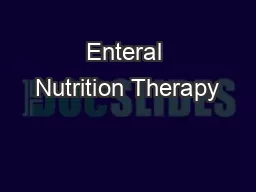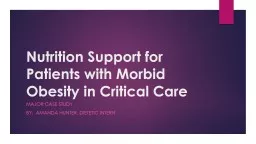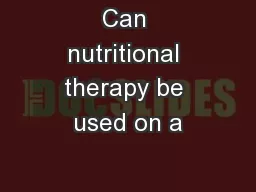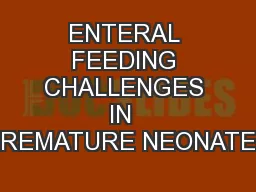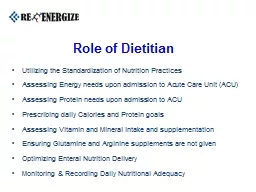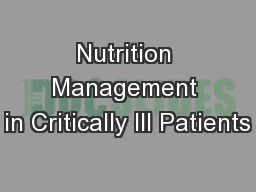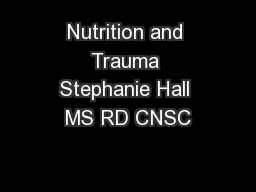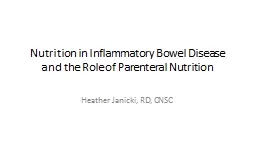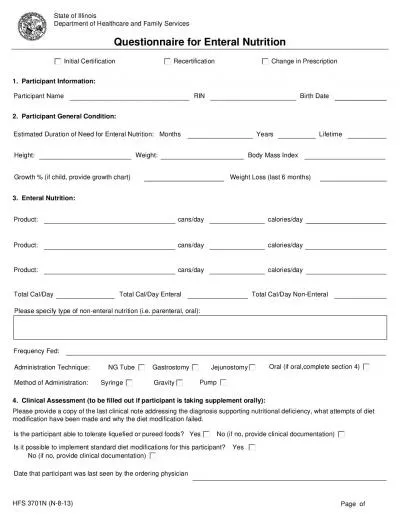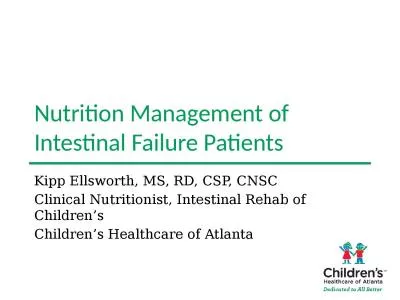PPT-Enteral Nutrition Therapy
Author : sherrill-nordquist | Published Date : 2016-06-20
for the Surgical Patient John W Drover MD FACS FRCSC Associate Professor Department of Surgery Queens University June 18 2011 Dietitians of Canada Annual National
Presentation Embed Code
Download Presentation
Download Presentation The PPT/PDF document "Enteral Nutrition Therapy" is the property of its rightful owner. Permission is granted to download and print the materials on this website for personal, non-commercial use only, and to display it on your personal computer provided you do not modify the materials and that you retain all copyright notices contained in the materials. By downloading content from our website, you accept the terms of this agreement.
Enteral Nutrition Therapy: Transcript
Download Rules Of Document
"Enteral Nutrition Therapy"The content belongs to its owner. You may download and print it for personal use, without modification, and keep all copyright notices. By downloading, you agree to these terms.
Related Documents

